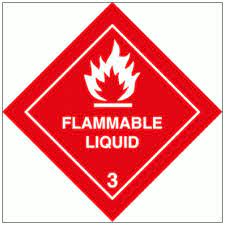This blog describes the measures required to control the risk to health and safety when spraying flammable liquids. So first we have to understand about the flammable liquids.
Flammable liquids Flammable liquids are dangerous goods of Class 3.
They are identified by a red diamond label on their container with the words FLAMMABLE LIQUID.
Many flammable liquids are applied by spraying, including:
- Paints and hardeners
- Resins Lacquers
- Paint removers Adhesives
- Rust treatment chemicals
Flammable solvents and thinners are often mixed with the above substances. Spraying of flammable liquids is conducted in a number of industries such as vehicle refinishing and furniture manufacture.
Spraying flammable liquids- Their Hazards
Employers and employees at these workplaces are not fully aware of the potential risks to the health and safety of their employees from exposure to chemicals used in the spray painting process. Without the proper control measures in place, prolonged exposure to these chemicals over a period of time may lead to serious injury or illness.
There are two main hazards associated with spraying of flammable liquids:
Fire and/or Explosion – Due to the flammable nature of the substances used. Hazards to health – depending on the hazardous nature of the substance.
Fire risks Fire or explosion may occur if:
Vapors of flammable liquids accumulate to high enough concentrations, and there is an ignition source present.
The ignition source can be:
- Static discharge from poorly earthed equipment.
- Sparks from electrical switches and equipment.
-
- Naked flames (e.g. welding or cutting, lit cigarettes, heaters).
- Portable battery powered equipment (e.g. radios, mobile phones).
- Hot surfaces, the hot filament from a broken light, etc.
Health Risks:
There may be various health effects associated with the use of flammable liquids. Depending on the substance being sprayed, the length of time exposed and frequency of exposure, these substances can cause:
- Difficulty in breathing Skin and eye irritation
- Drowsiness
- Nausea
- Sensitization
- Long-term damage to skin, nervous system, kidney, liver or respiratory tract.
- Specific information on the health hazards of the flammable liquid being sprayed can be found in the Material Safety Data Sheet (MSDS) for that substance. The MSDS is available from the manufacturer, importer or supplier of the substance and should be read prior to the substance being used
Information, instruction, and training
Employers need to provide the necessary information, instruction, and training to employees to ensure that they are able to perform their work in a manner that is safe and without risks to health. Training will be primarily aimed at employees who handle the flammable liquids as well as their supervisors, but other employees who may be exposed should be made aware of hazards of the products used and the necessary measures required to avoid exposure.
- Training should cover issues such as:
- Where to locate the register of MSDS.
- How to read and understand an MSDS and label.
- Understanding the hazardous nature of the substances used.
- The measures in place for controlling risk.
- Why employees need to use the controls provided.
- How to use controls correctly






